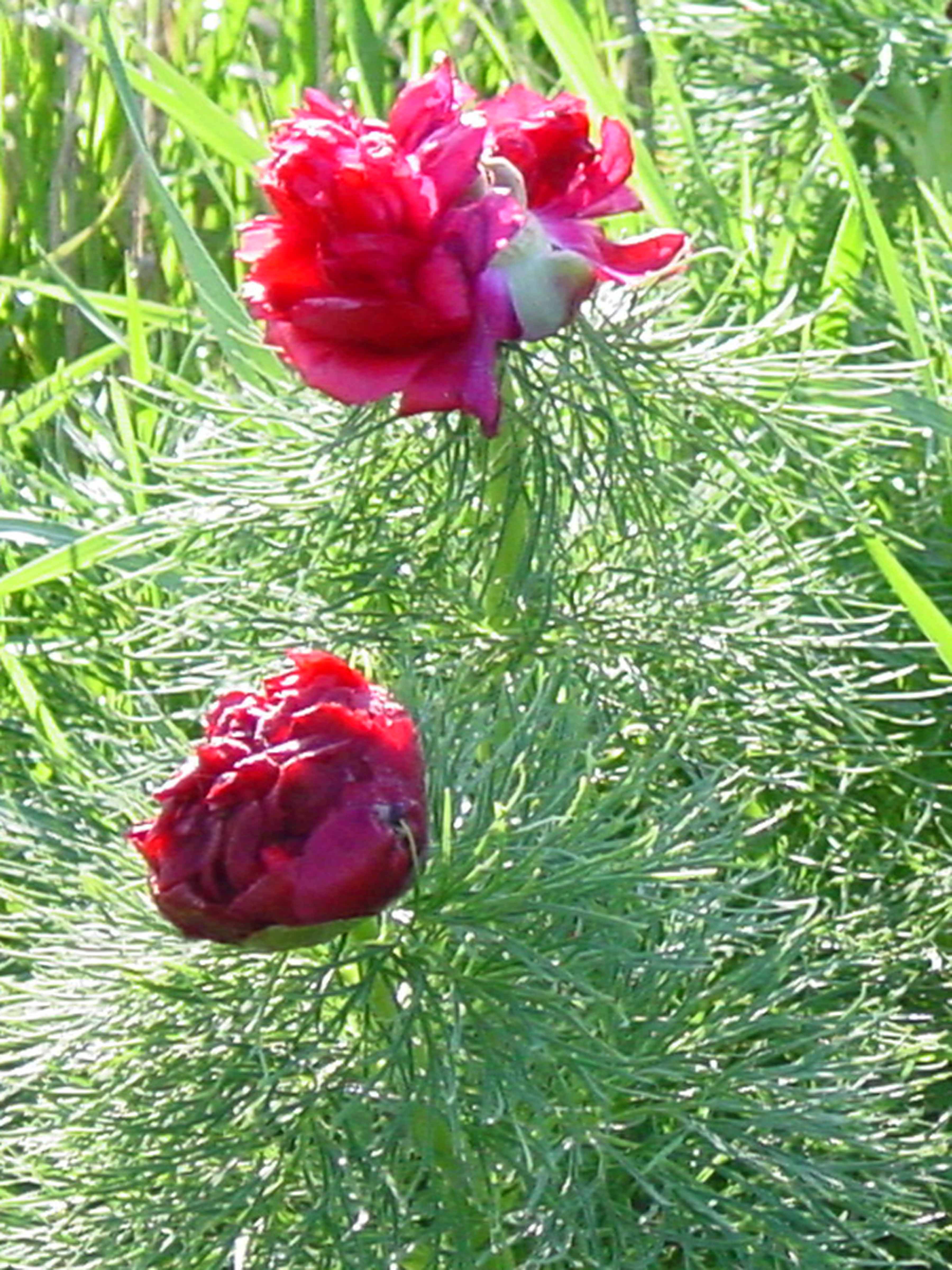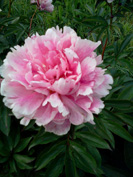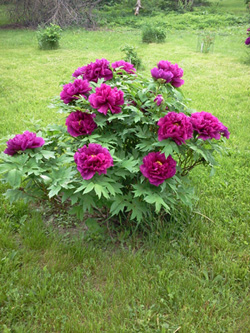
|
Keyword Search |
Glossary

A lower-growing red-flowering species of peony. Species name is tenuifolia. The flowers emerge 2 or 3 weeks ahead of the lactifloras. My Grandmother referred to it as her ‘Mother’s Day Peony’ because that is when it bloomed for her in central Illinois. It is also referred to as the ‘Memorial Day Peony’ in more northerly climates.
 A peony whose foliage dies back completely to the ground. Most garden peonies are herbaceous. Herbaceous species are found in Asia, Europe, and in the northern hemisphere of America. None are native to the southern hemisphere.
A peony whose foliage dies back completely to the ground. Most garden peonies are herbaceous. Herbaceous species are found in Asia, Europe, and in the northern hemisphere of America. None are native to the southern hemisphere.

This generally refers to a peony which is a cross between two different peony species.
 This peony is a cross between a tree peony and an herbaceous peony. Tree peonies and herbaceous peonies are the two major divisions or sections of the peony family hence the cross is referred to as intersectional.
This peony is a cross between a tree peony and an herbaceous peony. Tree peonies and herbaceous peonies are the two major divisions or sections of the peony family hence the cross is referred to as intersectional.

This is the most common species of peony found in most people's gardens. The species originated in China and became popular in Europe in the 1800s. During the first half of the 20th century, the species was referred to as albiflora, but was changed when an earlier writing was discovered naming them lactiflora.
Refers to the number of chromosomes. Daylilies are naturally diploid and have 2 chromosomes for each trait determining their characteristics. Mutations have been produced by breeders which are tetraploid and have 4 chromosomes for each trait. Diploids and tetraploids will not inter-breed in daylilies.
In peonies there are both naturally occurring diploids and tetraploids. Peony diploids and tetrapoids can be crossed and the resulting cross is a triploid.

Not actually a tree, but a shrub. They have woody stems which do not die back to the ground each year. Endemic to China. This is a picture of Yagumo.